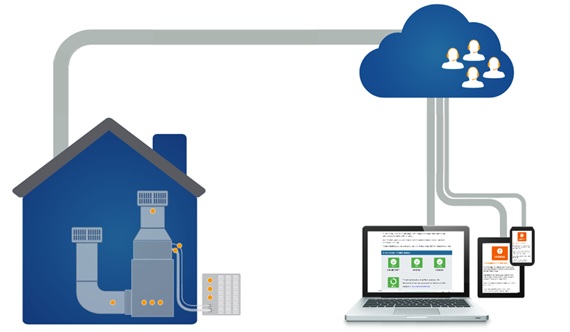 Project Title
Project Title
Cloud-based FDD for Residential Quality Maintenance
Project Number ET18SDG8011 Organization SDG&E End-use HVAC Sector Residential Project Year(s) 2019 - 2021This study compared the effectiveness of remote HVAC monitoring with FDD to the traditional residential quality maintenance baseline. The emerging technology is an add-on unit and works on most residential HVAC systems, tracking the performance of an HVAC system real-time through 10 sensors and sends notifications when faults and suboptimal performance are detected. The baseline of the study was modeled after SDG&E’s quality maintenance program that offered rebates for one-time system checkup and additional maintenance recommendations.
A field test was conducted from June 2019 to November 2021 at 44 residential homes in SDG&E territory. The emerging technology was installed on a total of 53 central air conditioners and heat pumps in 44 residential homes. The field study confirmed that the technology was able to remotely monitor the system performance and send alerts as soon as suboptimal system performance was detected. A few cases were investigated and found that an air conditioner could operate as much as 72% less efficient than when it was operating optimally. Those in the treatment group who received alerts repaired faults in a timely manner, which saved energy. However, customers in control group who didn’t receive alerts did nothing while the system operated inefficiently without notice.
In addition, a survey found monthly reports increased homeowners’ general awareness to the air conditioner’s operation and maintenance requirements. Over half of customers in the treatment group who received monthly reports performed some maintenance during the study period. By comparison, only one customer replaced an air filter in the control group.
The emerging technology can make the incumbent quality maintenance program more effective by complementing the one-time maintenance with continuous monitoring of residential HVAC systems. It is recommended that an additional study be conducted at a larger scale to validate the customer behavior and to verify that the energy savings found in this study are typical and scalable. Additionally, a study that compares similar products, perhaps those with a smart thermostat, may be necessary if the technology is incorporated into a future quality maintenance program.
